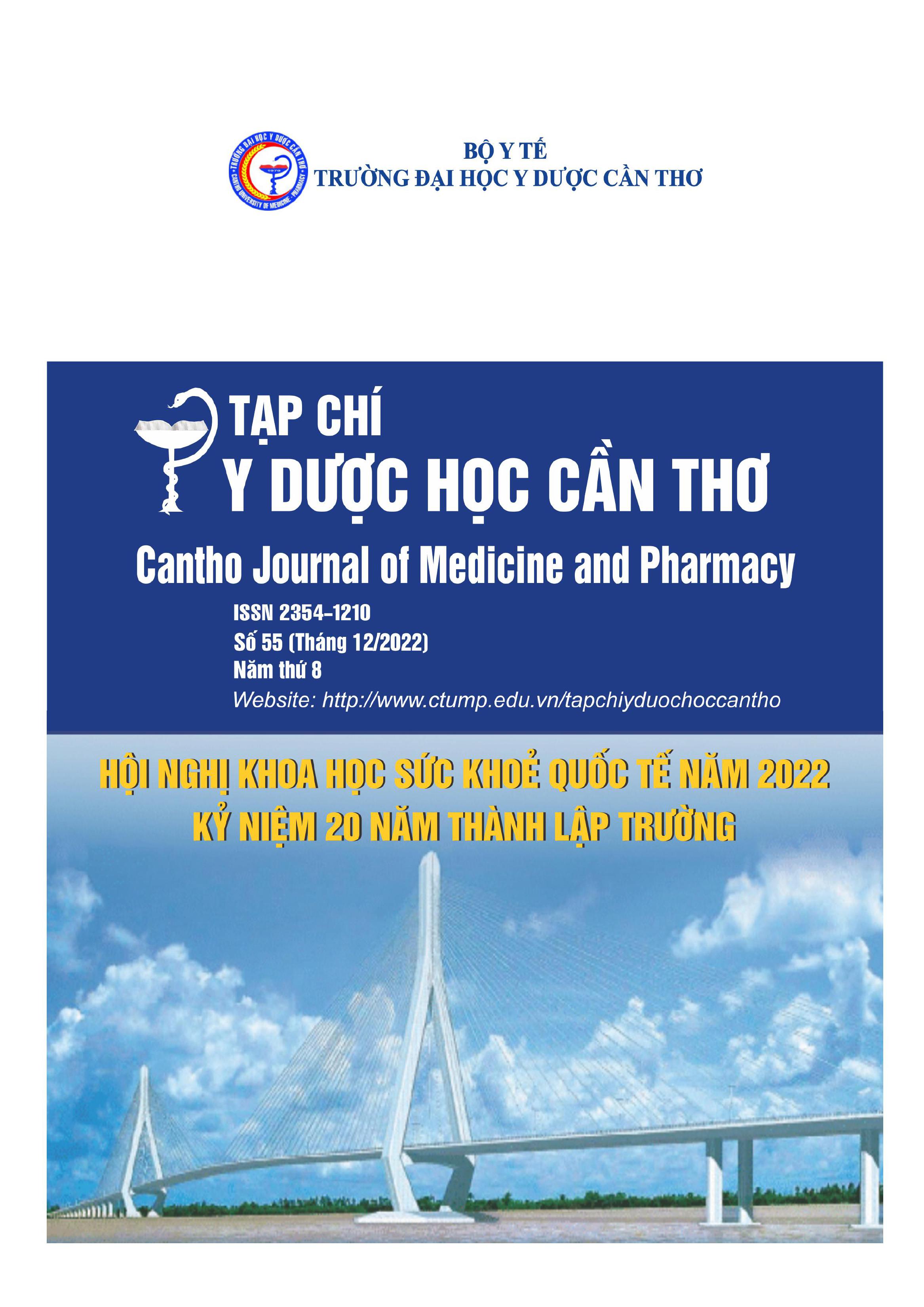SURGICAL OUTCOME OF ENDOSCOPIC INTERLAMINAR LUMBAR DISCECTOMY FOR DISC HERNIATION
Main Article Content
Abstract
Background: Lumbar disc herniation is the most common spinal disease, about 10% of herniated discs require surgery. Although open surgery for discectomy of the lumbar herniation is quite good, many authors continue to develop minimally invasive techniques to provide the best treatment. Endoscopic surgery is a minimally invasive surgery with many advantages. Objective: To evaluate the surgical outcome of lumbar disc herniation by endoscopic interlaminar approach. Materials and methods: An uncontrolled clinical prospective study at S.I.S Can Tho International General Hospital from 7/2022 to 10/2022. Selection criteria included patients with lumbar disc herniation with symptoms of radiculopathy, who did not respond to appropriate medical treatment after 5-8 weeks. Results: In 3 months, we performed the surgery in 9 cases. The mean age is 43,11 ± 5,06. Men account for 55,56%. All patients underwent magnetic resonance imaging, and a preoperative x-ray of the spine evaluated no cases of instability. The median value of VAS back pain and VAS leg pain post-op decreased statistically significantly with p<0.001. We did not record any intra- or postoperative complications. Conclusion: The endoscopic interlaminar approach is a safe and effective minimally invasive surgery in the treatment of lumbar disc herniation in case of appropriate indication.
Article Details
Keywords
Lumbar disc herniation, endoscopic interlaminar approach, minimally invasive surgery, surgical results
References
2. Võ Xuân Sơn, Lương Võ Phương Thông (2009), Phẫu thuật nội soi liên bản sống lấy nhân đệm thắt lưng, Tạp chí Y học thực hành, số 11/2009, tr.40-42.
3. Nguyễn Vũ, Lê Đức Tâm (2021), Kết quả bước đầu điều trị thoát vị đĩa đệm l5/s1 bằng phẫu thuật nội soi liên bản sống, Tạp chí nghiên cứu y học, 147 (11) – 2021, tr.177-185.
4. Daniel H Kim, Gun Choi, Sang Hoo Lee (2011), Chap 17 Interlaminal surgical approach, Endoscopic Spine Procedures, Thieme, 2011, pp.135-142.
5. Destandau J, (2005), Chap 21 Paraspinal endoscopic laminectomy and discectomy, Endoscopic Spine Surgery and Instrumentation, 2005, Thieme, pp.241-246
6. Hongfei Nie, Tian-Hang Xie, Jian-Cheng Zeng et al. (2017) Complications of Lumbar Disc Herniation Following Full-endoscopic Interlaminar Lumbar Discectomy: A Large, Single- Center, Retrospective Study, Pain Physician, 20:E379-E387.
7. Jin-Sung Kim, Jun Ho Lee, Yong Ahn (2020), Endoscopic Procedure on the Spine, Springer, pp.564-573.
8. Liu Y, Jin-Sung Kim, Chien-Min Chen et al. (2021), A Review of Full-endoscopic Interlaminar Discectomy for Lumbar Disc Disease: A Historical and Technical Overview, Journal of Minimally Invasive Spine Surgery and Technique, 6(Suppl 1), S109-S116
9. Lokhande (2020), Full-endoscopic interlaminar surgery of lumbar spine, Indian Spine Journal, 3 (1), pp. 66-77.
10. Ruetten S., Komp M., Merk H. et al. (2008), Full-endoscopic interlaminar and transforaminal lumbar discectomy versus conventional microsurgical technique: a prospective, randomized, controlled study. Spine (Phila Pa 1976),33, pp. 931-939
11. Sananthan Sivakanthan, Saqib Hasan, Christoph Hofstetter (2020), Full-Endoscopic Lumbar Discectomy, Neurosurg Clin N Am, 31, pp. 1–7
12. Wasinpongwanich K, Pongpirul K, Ruetten S et al. (2019), Full-Endoscopic Interlaminar Lumbar Discectomy: Retrospective Review of Clinical Results and Complications in 545 International Patients, World Neurosurgery, 132, 2019, e922-e928.
13. Wenbin Hua, Yukun Zhang, Cao Yang et al. (2018), Outcomes of discectomy by using full-endoscopic visualization technique via the interlaminar and transforaminal approaches in the treatment of L5-S1 disc herniation: An observational study. Medicine, 97, pp. 48-54.


